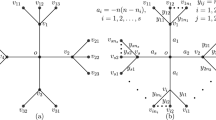Abstract.
Let D be a semicomplete multipartite digraph, with partite sets V 1, V 2,…, V c, such that |V 1|≤|V 2|≤…≤|V c|. Define f(D)=|V(D)|−3|V c|+1 and . We define the irregularity i(D) of D to be max|d +(x)−d −(y)| over all vertices x and y of D (possibly x=y). We define the local irregularity i l(D) of D to be max|d +(x)−d −(x)| over all vertices x of D and we define the global irregularity of D to be i g(D)=max{d +(x),d −(x) : x∈V(D)}−min{d +(y),d −(y) : y∈V(D)}. In this paper we show that if i g(D)≤g(D) or if i l(D)≤min{f(D), g(D)} then D is Hamiltonian. We furthermore show how this implies a theorem which generalizes two results by Volkmann and solves a stated problem and a conjecture from [6]. Our result also gives support to the conjecture from [6] that all diregular c-partite tournaments (c≥4) are pancyclic, and it is used in [9], which proves this conjecture for all c≥5. Finally we show that our result in some sense is best possible, by giving an infinite class of non-Hamiltonian semicomplete multipartite digraphs, D, with i g(D)=i(D)=i l(D)=g(D)+½≤f(D)+1.
Similar content being viewed by others
Author information
Authors and Affiliations
Additional information
Revised: September 17, 1998
Rights and permissions
About this article
Cite this article
Yeo, A. How Close to Regular Must a Semicomplete Multipartite Digraph Be to Secure Hamiltonicity?. Graphs Comb 15, 481–493 (1999). https://doi.org/10.1007/s003730050080
Issue Date:
DOI: https://doi.org/10.1007/s003730050080




